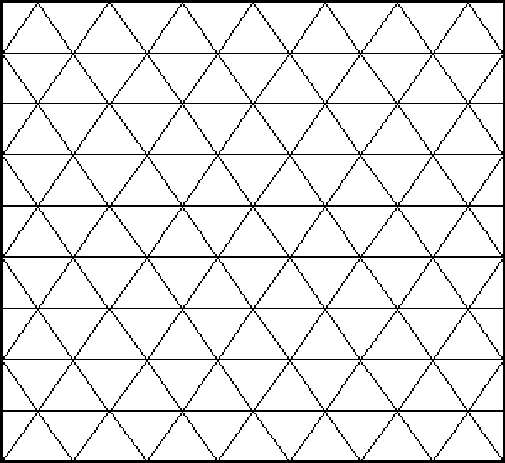Copyright © University of Cambridge. All rights reserved.
'Where Are They?' printed from https://nrich.maths.org/
Show menu
Why do this problem?
Recognising shapes is relatively easy - it requires spotting perhaps just one or two key characteristics and matching to a name. Generating a shape given the name, as in this activity, is much more difficult for young children and requires much more attention to be paid. Using a grid helps children to visualise
the shapes and make connections between them. Talking with a partner helps to clarify definitions.
Possible approach
This is an activity that can be introduced to the whole class who then work in pairs. Using a large version of the grid (either on an IWB or using the grid paper) tell the children that lots of different shapes are hidden, and ask if they can see any. Draw an equilateral
triangle to illustrate. Ask what it is called and invite a child to come out and draw another equilateral triangle, perhaps a different sized one. Explain that they don't have to go over the lines of the grid but they do have to join up the vertices.
Introduce the name of each of the shapes in turn, share understandings of what the shape is like and allow some time for the children to work in pairs to see how many different ones they can find. Bring the children together for each, or after each two or three, and invite them to illustrate for all to see. Does everyone agree? Encourage the children to name their shapes on their grid.
Key questions
What shapes can we see?
Can we draw more than one of each?
Are they the same or different?
How do we know this is a ...?
What makes it a ...?
Possible extension
Give some children dotty paper rather than isometric paper so that they have to visualise to a greater extent. Children who find this very easy could be challenged to see which shapes they could find on a square dotty grid. The free programme http://illuminations.nctm.org/ActivityDetail.aspx?ID=125 may be of interest to children who want to pursue isometric drawings further.
Possible support
Children who find it difficult to see the embedded shapes may benefit from the sheet of shapes. If you have triangular pinboards and elastic bands these can be helpful too.
